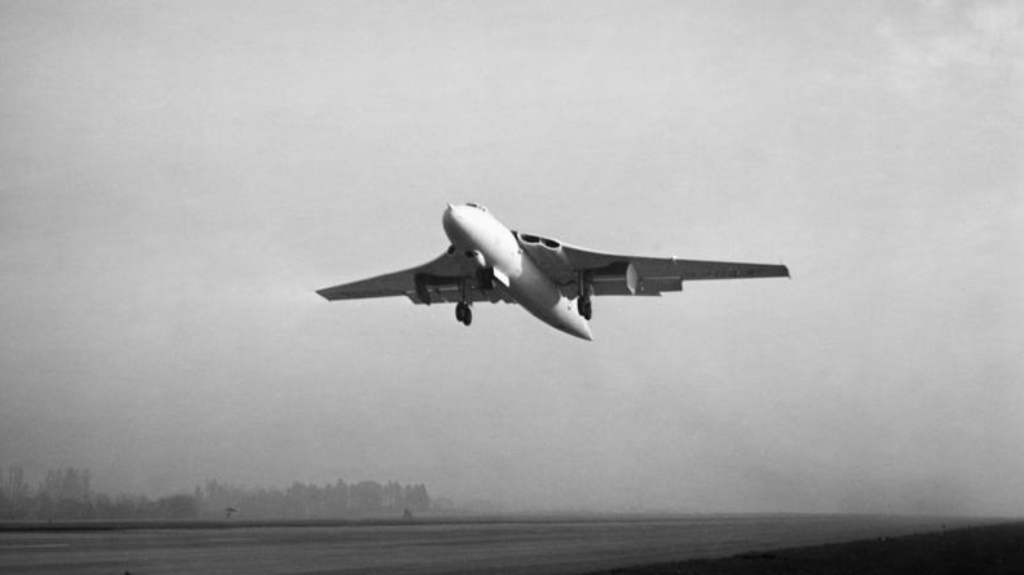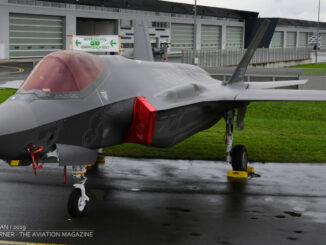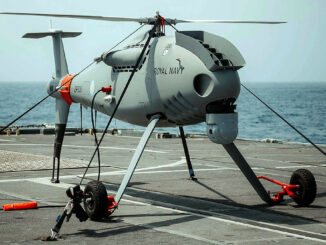 On 11th October 1956, a Valiant B.1 bomber of No. 49 Squadron of the Royal Air Force became the first British aircraft to drop a live atomic bomb, within the Kite test, being a part of Operation Buffalo.
On 11th October 1956, a Valiant B.1 bomber of No. 49 Squadron of the Royal Air Force became the first British aircraft to drop a live atomic bomb, within the Kite test, being a part of Operation Buffalo.
The first British nuclear programme, nicknamed Tube Alloys, was launched as early as in 1941. Two years later, it merged with the American and Canadian efforts to create a joint development, known as Manhattan Project.
However, shortly after the end of the World War II, the United States withdrew from multinational cooperation on atomic development. Therefore, the British authorities decided to open the country´s own nuclear weapon programme, codenamed High Explosive Research. Works on the project were being conducted in cooperation with Australian government, and vast areas of the Australian mainland were chosen for the first live atomic tests.
However, the first British atomic bomb was detonated in the Montebello Islands, off the coast of Western Australia – on 3rd October 1952, within Operation Hurricane. Next two tests were codenamed Operation Totem and took place one year later at Emu Field in the Great Victoria Desert.
In 1955, another test field was established at Maralinga, in the west of South Australia state and also within the Great Victoria Desert. There, two series of tests were performed – four explosions in 1956, within Operation Buffalo, and the next tree in 1957, codenamed Operation Antler.
The first British atomic bomb, known as Blue Danube, were large and weighed about 10,000 pounds (4.5 tonnes). The size of the bomb forced the authorities to launch development of a special bomber aircraft equipped with bomb bay large enough to carry Blue Danube. In consequence, the new British nuclear bomber force was created, designated the V-class bombers and included three aircraft – Vickers Valiant, Avro Vulcan and Handley Page Victor. The initial plan estimated that approximately 800 examples of Blue Danube would be made.
However, there were several concerns related to successful implementation of the V-class bombers into service. Therefore, the government demanded to create a smaller bomb, able to be carried by the then standard tactical aircraft of the RAF and the Royal Navy. The new tactical nuclear weapon, made in accordance to that requirement, was named Red Beard. It was half the size of Blue Danube and weighed only 1,750 pounds (794 kg).

The first nuclear test of the Red Beard bomb, codenamed One Tree, took place on 27th September 1956. The bomb was placed on a tower and its yield was estimated at 16 kilotons TNT. On 4th October, the second bomb was detonated at ground level, within the Morocco test. Its yield was only about 1.4 kt TNT.
The third test, named Kite was the only airdrop within Operation Buffalo. Initially, it had to be a full live test of Blue Danube bomb carried by one of the British so-called V-class bombers. However, there were several concerns regarding possible fallout and damage caused by detonation of the 40-kiloton-TNT bomb, thus, it was finally decided to use only a 2.9-kiloton-TNT, low-yield variant of the weapon.
On 11th October 1956, the Vickers Valiant B.1 bomber (WZ366) of No. 49 Squadron RAF became the first British aircraft to drop a live atomic bomb. It detonated approximately 150 metres above the ground level, missing the target point by a few dozen metres. The explosion caused two radioactive clouds, the low-level one with fallout over the test area and the high-level one that dropped some radioactive material over South Australia, Victoria and New South Wales states (although considered not dangerous).
Two Valiant crew members, Squadron Leader Edwin Flavell (pilot) and Flight Lieutenant Eric Stacey (bomb aimer), were later awarded the Air Force Cross.
The fourth, and last, test of 1956, was codenamed Breakaway and was performed on 22nd October 1956. The bomb was placed on a tower and its yield was 10.8 kt TNT.
Operation Buffalo confirmed Red Beard can achieve the operational status, as well as proved the capabilities of the Valiant as nuclear weapon carrier. In conclusion, there was no need to continue with manufacturing of Blue Danube and production was ceased after the fifty-eight examples were made.
The Red Beard tactical nuclear weapon entered active service in 1962. The bomb was made in two variants, Mk 1 and Mk 2, with yield of 15 and 25 kt TNT, respectively. It was intended to be carried by English Electric Canberra and V-class bombers. There were more than 370 examples of Red Beard ordered but only 110 were produced. The bomb was withdrawn from service in 1972.

Cover photo: A Valiant bomber of No. 49 Squadron RAF takes-off for Christmas Island in the Pacific, to take part in Britain’s nuclear tests of 1957 (IWM C(AM) 2463, cropped). IWM photos used under the IWM Non Commercial Licence.



